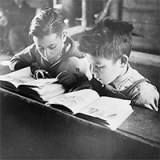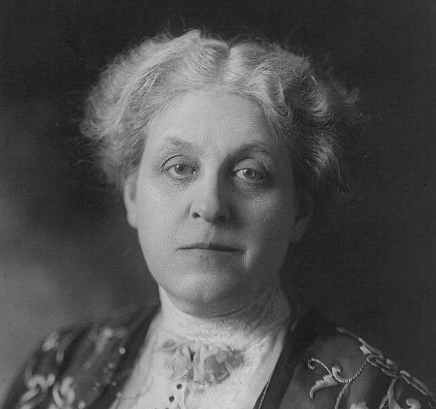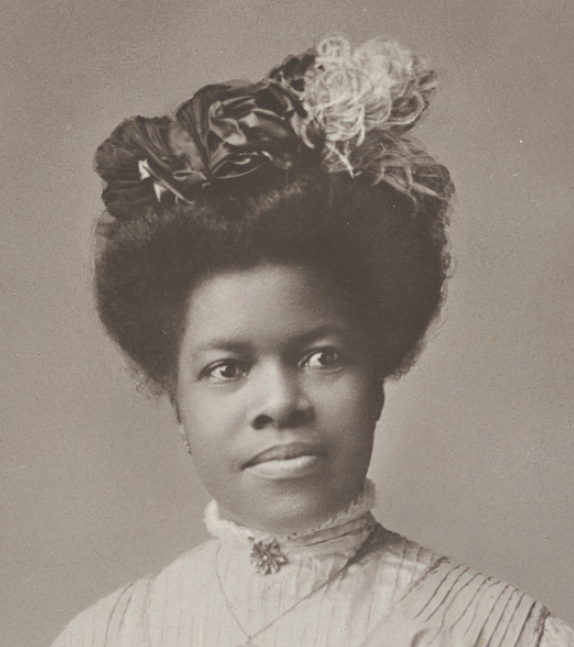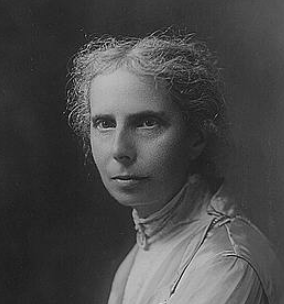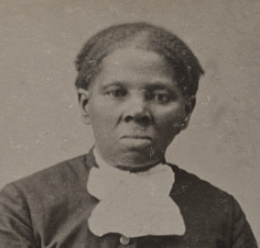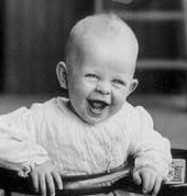I'm searching for some new activities to engage students with primary sources, and came across this one that I like for all sorts of purposes, from Edutopia:
"...students can engage with art and develop literacy at the same time when you give them adjectives and ask them to find a piece of art [or primary source] that fits their word. They can then write the name of, or [draw a sketch, to later] present their artwork and share why they think it’s a good fit for their assigned words. I’ve seen this done masterfully with Apples to Apples: Green Cards."
In the context, this is presented as an option for younger students, but I think it work well as a warm up activity for any age group, and is suited as a multisensory vocabulary solidification activity for multilingual learners.
Replies displayed by creation date
I took you up on the idea of finding a piece of art that illustrates one of the vocabulary words from the Apples to Apples: Green Cards list - eccentric. Carol Highsmith has a number of photos of "eccentric" art, including the one below:

Title: Many U.S. cities use eccentric themes, from cows to frogs to various depictions of musical instruments for their public art. https://www.loc.gov/item/2016630512/
It seemed appropriate for tonight's Iowa Republican presidential primary caucuses (minus the snow)!
An loc.gov photo search for eccentric yields enough examples for students to come up with their own definition of the term, I think.
Love this simple strategy! Please post in the Elementary group. It will be a big hit!
I did as  Mary Johnson did and chose a word from the Applies to Apples list - cranky.
Mary Johnson did and chose a word from the Applies to Apples list - cranky.
While an initial search with this key term didn't produce too many photograph/print options from the Library of Congress search engine (as is the case many times), I turned my search to Chronicling America (which you can point students to in the case that they are also stumped by their word). I found a comic strip from the Evening star. [volume], September 20, 1914.

Evening star. [volume] (Washington, D.C.), 20 Sept. 1914. Chronicling America: Historic American Newspapers. Lib. of Congress. <https://chroniclingamerica.loc.gov/lccn/sn83045462/1914-09-20/ed-1/seq-67/>
This activity seems like a great way to build students' digital literacy skills, vocabulary skills, and teach them early steps in the research process. Great post,  Alison Noyes
Alison Noyes
Great activity idea  Alison Noyes
that was fun to see put in action by
Alison Noyes
that was fun to see put in action by  Mary Johnson
and
Mary Johnson
and 
Here are some other adjective-based ideas for analyzing primary source images, although some could be adapted for use with other primary source types.
- Use as many adjectives as you can to describe someone/something in this picture. Bloom’s Taxonomy Image Writing Prompts
- List as many adjectives as you can to describe someone/something in this picture. Then use your list to create a written biographical sketch or poem. Grade 4 Writing Prompts & Activities
- Divide students into groups and have them work together to create a shared, collaborative document (i.e., Google Docs). Direct them to look closely at an image as a whole and then in detail. Ask students to write down 3-5 nouns, 3-5 verbs, and 3-5 adjectives that they think describe this scene or situation. Then tell them to focus on one person or object in the picture, looking closely at the details. After, they will imagine themselves as the person or object and write down 3-5 nouns, 3-5 verbs, and 3-5 adjectives that they think describe how the person or object is thinking or feeling. Finally, have students use their word lists to write a poem or short song about the picture. Grade 5 Writing Prompts & Activities
 Alison Noyes
I can see so many ways to use these connections. I really enjoyed your post and everyone's comments.
Alison Noyes
I can see so many ways to use these connections. I really enjoyed your post and everyone's comments.
 Alison Noyes
I chose the word delicate. And found this recording in the National Jukebox. "The Lass with the Delicate Air" https://www.loc.gov/item/jukebox-261993/
Alison Noyes
I chose the word delicate. And found this recording in the National Jukebox. "The Lass with the Delicate Air" https://www.loc.gov/item/jukebox-261993/
Turns out, there's quite a history to this song, which I share here:
And this page has the musical notes to accompany the song in case students would like to sing it themselves: https://song-archive.livejournal.com/56079.html
Although I love the idea of using songs for their vocabulary, this would be a tough one for ELL students without the lyrics, I think. Perhaps having the words and the music and then limiting it to only the first stanza would work though. It might also be fun to combine the recording with this illustration from the British Museum from the first link above:

Magical. That was my adjective. How did I not know about the Library's special collection of Harry Houdini's self-curated scrapbooks? First I found this fascinating video called "Magical Momentos," and then I found  Cheryl Lederle's blog post titled Harry Houdini, Ghostbuster: Exploring an Illusionist’s Exposés through Primary Sources. This post discusses Houdini's analysis of how, "“how a photographer could produce fraudulent ‘spirit photographs’ that purportedly documented the apparition and social interaction of figures from beyond” and his effort "investigating and debunking" such things. Aside from being interesting, this is relevant with AI generated photos today.
Cheryl Lederle's blog post titled Harry Houdini, Ghostbuster: Exploring an Illusionist’s Exposés through Primary Sources. This post discusses Houdini's analysis of how, "“how a photographer could produce fraudulent ‘spirit photographs’ that purportedly documented the apparition and social interaction of figures from beyond” and his effort "investigating and debunking" such things. Aside from being interesting, this is relevant with AI generated photos today.
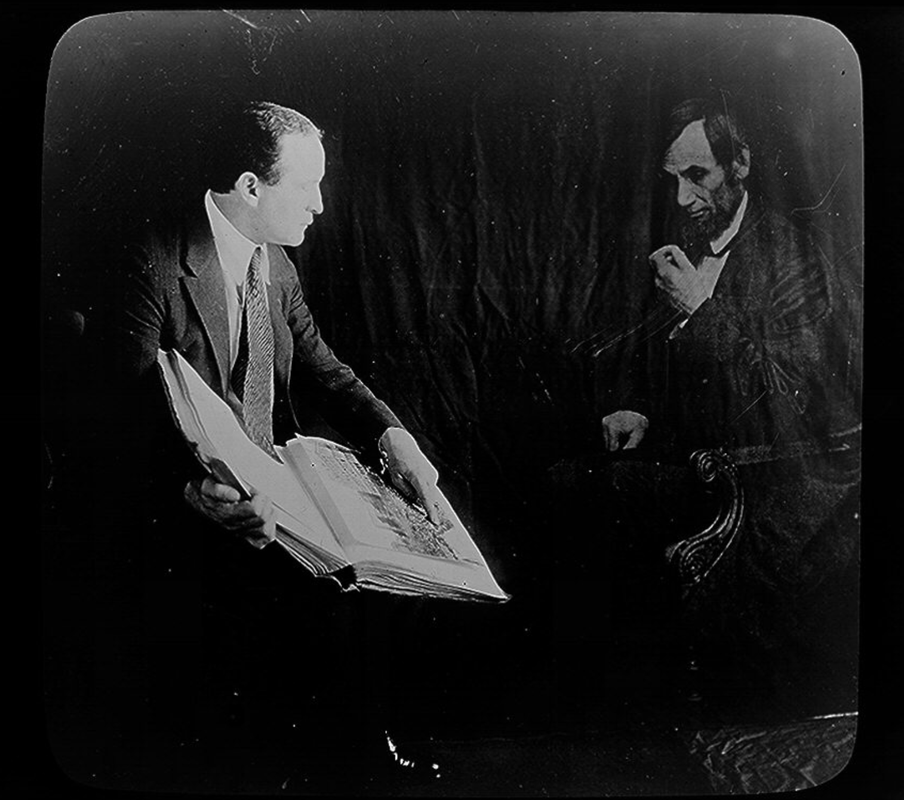
Houdini and the ghost of Abraham Lincoln
Thanks for the original post and idea,  Alison Noyes! And thanks
Alison Noyes! And thanks  Mary Johnson and
Mary Johnson and 
Testimonials
- I love that there is new info on the site daily!
- I had a wonderful time working with the Library of Congress and learning about all of the resources at my fingertips!
- The TPS Teachers Network has an equal exchange of ideas. You know it's not a place where you're being judged.
- My colleagues post incredibly fine resources and ideas....the caliber of the suggestions and resources make me feel that I take a lot from it. It's a takeaway. And I hope that I can give back as much as I get.
- Going into this school year, I have a fantastic new resource for my own instruction and to share with my colleagues!
- I am very glad that I discovered the TPS Teachers Network through RQI. Great resources can be hard to find out there on the internet!

